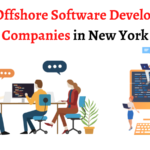There are numerous transportation management software available in the market, but how do you find one that fits your needs? Here are six tips for choosing the best TMS software that will help you grow your business and spend minimal time managing the system and training staff.
1. Let software vendors know about ALL of your complexities
It may seem like communicating all of your business model’s pain points and complexities might just confuse your TMS provider, but this will actually help to figure out whether a TMS system is made for your business or not. For example, if you are a 3PL company and your business takes care of around 50% LTL shipments, you need a system that supports LTL capabilities. If you don’t communicate this to your TMS company ahead of time, you will waste a great deal of time and money switching over to another vendor later.
2. Think long-term
Are you opting for a low-cost or a free TMS system just because it’s cheaper? Chances are, lower-cost TMS systems might be a temporary solution, but you cannot grow with the system. The downside to going with a less expensive system is that you then have to transfer the data in that system over again to the new system which supports your long-term initiatives. This is again, more time-consuming, and you have to spend time training your employees on the new vendor. It is great to go with a system that you can grow with in the long run from the start if you are financially capable of doing so.
3. Look for user-friendliness
Nobody wants to waste countless hours training staff and customers on how to use a TMS system. The more user-friendly your interface is, the easier it will be to digest. A good TMS will have a one-click view to see all of your important shipments on one screen. You should be able to take any high-level actions such as sending a message regarding the shipment without leaving the dashboard.
4. Find a balance between feature-heavy and simplicity
Going along with the user-friendliness tip, you want to look for software that is not too feature-heavy and not too simple either. Simple is good, but at the end of the day, the features should be there. With every system you look into, ask yourself if a particular feature is absolutely needed, or just there to make the TMS company look good.
5. Check online reviews
There are some really helpful vendor platforms out there such as Capterra and G2, which post client reviews of SaaS products in various industries. Both of these websites have a category for ‘Supply Chain’ and ‘TMS’. Be sure you are looking at both the positive and negative reviews, and debating whether a system will work for your company or not. A good tip is to look at these reviews ahead of time before scheduling any demos and asking the companies to address the negative reviews if there are any.
6. Get referrals
Not everybody wants to take a shot at the dark and go for any system that looks promising. The best way to know if a system is good or not is to see what experience your own colleagues have had with the TMS. Ask around and see what TMS platforms your friends, family, and coworkers have used before, and how they liked it. Referrals are often preferable over online reviews since you know the feedback you are getting is genuine.
Zara Raza is a Digital Marketing Specialist at Turvo Inc. She graduated from the University of California – Irvine in 2019 and has written several blogs on topics such as technology and supply chain management.







